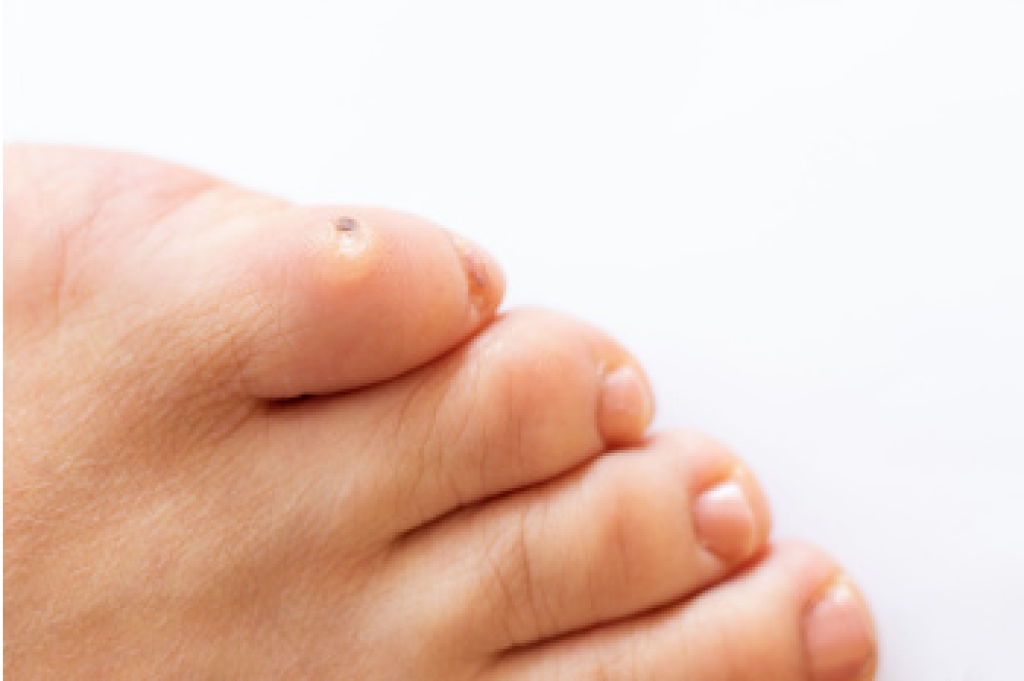
Corns and calluses are thickened areas of skin that develop as a natural response to repeated pressure or friction. Although they help protect the skin, they can become painful, especially when located on weight-bearing areas of the feet. Corns typically form on the tops or sides of toes and are often small and round. Calluses are usually larger and develop on the soles of the feet, especially under the heels or balls of the feet. Wearing tight shoes, walking barefoot, or having foot deformities like bunions can contribute to the formation of corns and calluses. While these skin changes are not harmful on their own, the discomfort they cause may affect walking and daily comfort. Treatment often includes reducing pressure through padding, wearing properly fitted footwear, and sometimes using custom orthotics. If corns or calluses are causing pain, it is suggested you visit a podiatrist for proper care.
Corns can make walking very painful and should be treated immediately. If you have questions regarding your feet and ankles, contact Robert Hutchison, DPM, FACFAS of Lower Keys Foot & Ankle Surgery. Our doctor will treat your foot and ankle needs.
Corns: What Are They? And How Do You Get Rid of Them?
Corns are thickened areas on the skin that can become painful. They are caused by excessive pressure and friction on the skin. Corns press into the deeper layers of the skin and are usually round in shape.
Ways to Prevent Corns
There are many ways to get rid of painful corns such as:
- Wearing properly fitting shoes that have been measured by a professional
- Wearing shoes that are not sharply pointed or have high heels
- Wearing only shoes that offer support
Treating Corns
Although most corns slowly disappear when the friction or pressure stops, this isn’t always the case. Consult with your podiatrist to determine the best treatment option for your case of corns.
If you have any questions, please feel free to contact our office located in Key West, FL . We offer the newest diagnostic and treatment technologies for all your foot care needs.
